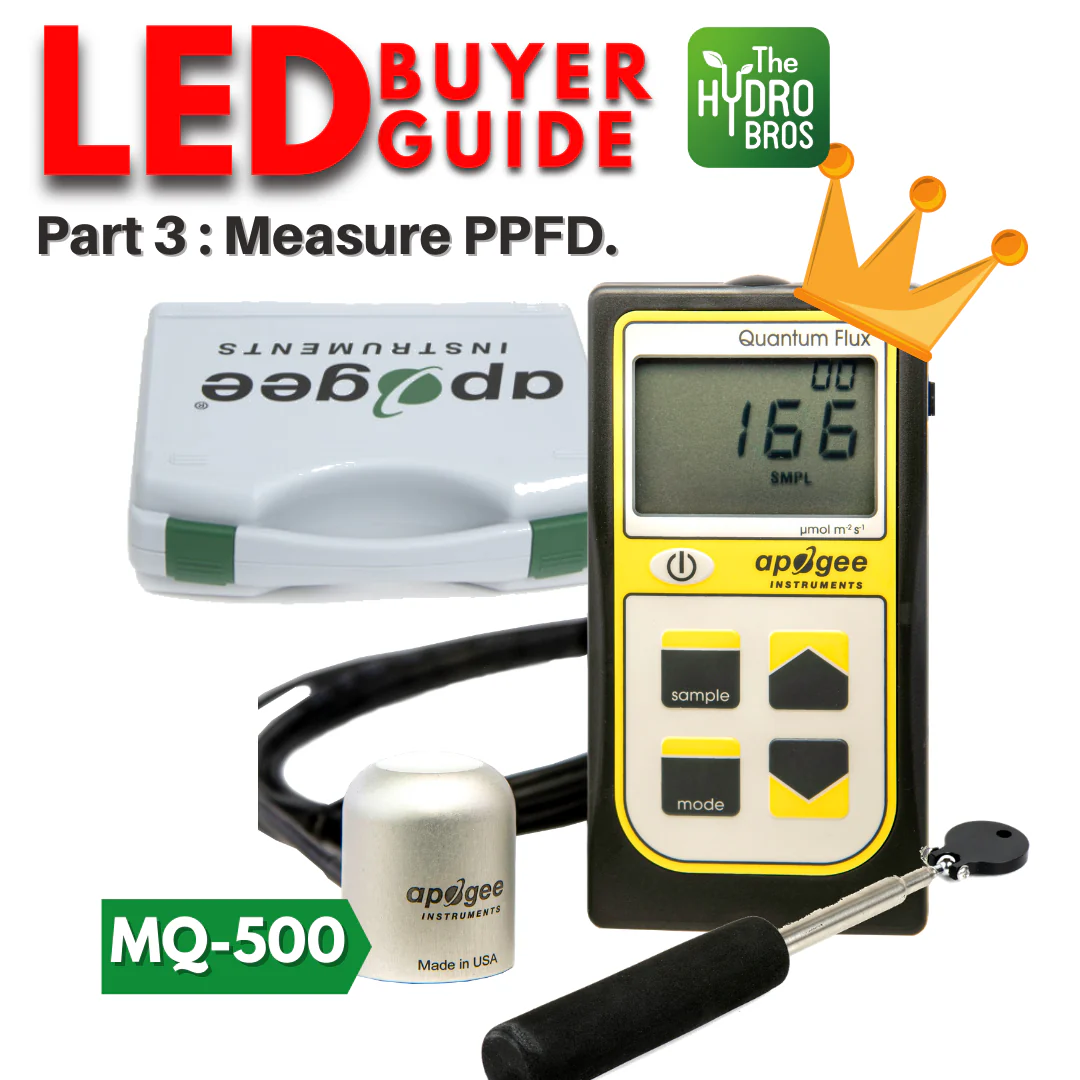The king and the gold standard of PAR meters, and used by experts the world over. Every par map you see, is likely to have been measured by this meter. We're an official distributor and they're available in-store and online 🍁🌱🙂
A PAR meter (aka quantum meter) measures light “intensity” received by plants (you’ll see this often referred to as “PPFD”).
🤓 Current science literature suggest the sweet spot for flowering is 600-900 PPFD, and anything more will require CO2 in a sealed room.
• The higher the light from your canopy = more coverage but 𝑙𝑒𝑠𝑠 intensity/ lower PPFD
• The closer the light to your canopy = less coverage but 𝑚𝑜𝑟𝑒 intensity/ higher PPFD
An example: your light is raised at the highest it can go, and blasting at full wattage during flower. If your average PPFD at canopy is at 1200 and you’re not running co2 in a sealed room, you can bring down the wattage. You save ££ ! Your light uses less wattage, and your in/outtake ramps up less often as there’s less heat to dispel.
A par meter will also help you understand the light distribution in your grow room
Deserves a separate post but FYI, although most LEDs are symmetrical by design, their light uniformity isn’t (check out the manufacture par maps for your lights and you’ll see the PPFD is not even) . Light uniformity deserves a separate post, but Telos have arguably the best uniformity. 💪
We won’t lie, this is a sizeable investment, and honestly, if you haven’t dialled in everything else (your temperature, humidity, EC, PH..) buying this now, is like buying sprinkles for a cake that you’ve yet to bake 🎂😄
As always, your own thoughts, experiences, knowledge bombs welcome in the comments. 👍🤙🙂🌱
#TheHydroBros
#ledlighting
LED Buyer Guide Part 3: Measure PPFD

Tags: Led



